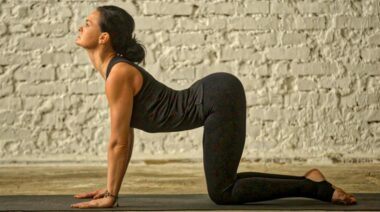Ask some yoga practitioners what their most challenging pose is and they will answer “Savasana.” Traditionally named “corpse pose” this is the last pose in a class, where you lay on the back and do nothing. The goal here is to rest and relax after a yoga practice and it is the capstone that marks the end.
Ask most athletes what the hardest part of their training routine is and they may tell you it is taking time off to rest or tapering before a big event.
Why is stillness challenging?
In a nation that values doing more over doing less, it is no wonder that many people are challenged with the notion doing less can actually be doing more. We are rewarded for our accomplishments and for how much we can do. There is a longing to have a superhero attitude toward adversity and what we can take care of in our life all by ourselves. More than ever, people need personal time and meditation – especially if you are athlete and use your body more than the average person.
Whether you are an athlete or a busy human, downtime is important for several reasons:
- Allows the immune system to take a break from pumping all those t-cells for cellular clean up.
- Let’s the brain and nervous system down-regulate from discipline, ambition, and overcoming limiting beliefs.
- Allows strains and pains to heal.
- Returns the body to parasympathetic responsiveness for better rest.
- Being still helps the mind lessen distractions and attention deficit hyperactive disordered thinking.
This downtime can increase overall performance and give you the edge over your competition. If lying down still seems challenging, mantras and visualizations can be done to help transition a task-driven brain into the ease of doing nothing.
Benefits of Savasana Pose:
- A set time practicing being still with the support of the floor.
- Personal time devoted to visualizing strategies or mental performance.
- When done out doors, looking up toward the sky helps remind us to expand our perspective past current stressors or challenges.
- When done before bedtime, it can help the brain balance serotonin and melatonin for a better night’s sleep.
How to Do Savasana:
- Clear a six-foot circumference on a clean floor
- Lay a blanket or yoga mat down.
- Lay on your back on the blanket or mat.
- Lay your arms 1-2 feet away from hips, with palms up and arms extended.
- Separate knees 2 feet apart, with legs extended.
- Use pillows or other props to support you and make the pose more comfortable.
- Breathe deep into the belly.
While lying in Savasana, begin with allowing your mind to wander. After a few minutes or ten deep breaths, focus on the spaces between the thoughts or introduce a personal intent or meditation to trick the intellectual brain to shut down. The idea is to help you remember that life can move at the speed of light and, before we know it, can be gone.
Tend to quality of what you do instead of how much you do and you might find greater joy and appreciation for the tasks and/or athletic endeavors you. Explore being still and practice being dead before it actually happens and we might all appreciate living more.
Photo courtesy of Shutterstock.






